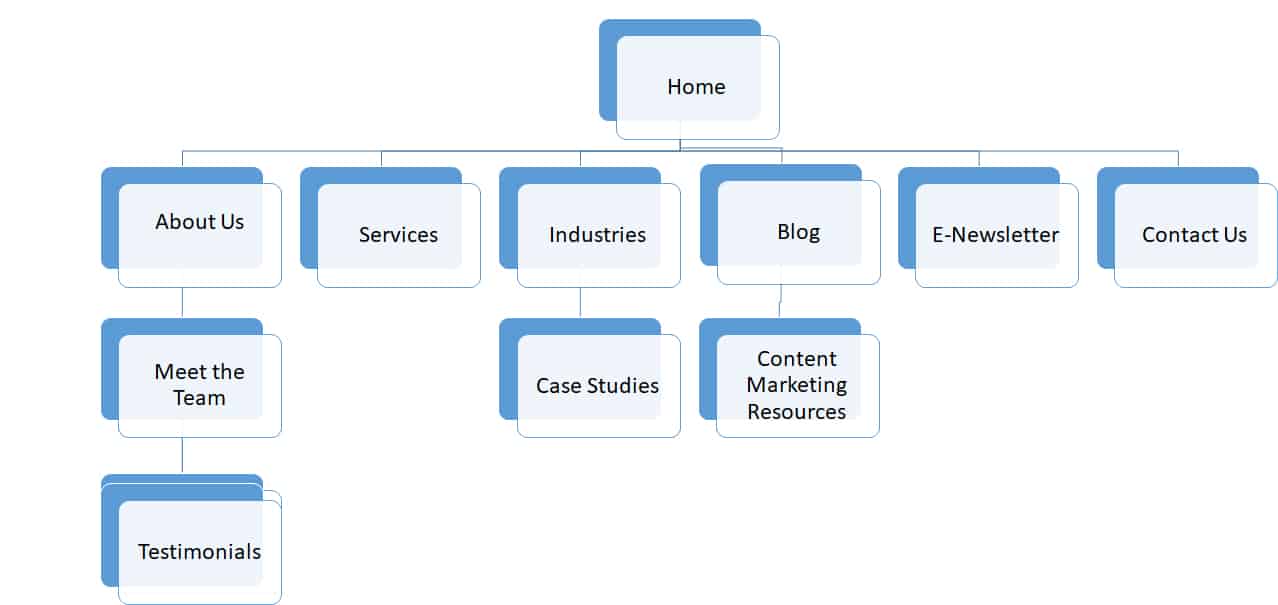Does your website look modern and professional?
Does the language reflect what your business actually does?
Is your website helping you convert prospects into leads and then customers?
If the answer to each of these is not a confident “yes,” it’s time to redesign your website. (Don’t have time for a comprehensive redesign? This quick, five-step website audit will help you identify and make small, incremental updates.)
We’ve worked with several B2B clients on full redesigns and website reorganizations, and each time, planning has been key to success. Here are the first questions we ask before we dive in:
What’s your goal?
Never start a website redesign or even a simple reorganization without having a goal in mind. Is it generating leads? Selling product? Retaining existing customers? Whatever your goals, don’t beat around the bush. Make sure every page moves you closer to a specific goal and includes a Call to Action (CTA).
What’s the data say?
Look at the analytics for your website. You may think that your About Us page is effective, but if people are spending just 20 seconds there and then leaving the site (measured by the bounce rate – the lower the rate the better), it’s not resonating with visitors. Learn more about your bounce rate and two other powerful website metrics you can track here.
Also look at engagement metrics to better understand how users are interacting with your website. Read more about what user engagement metrics can tell you here.
You should also talk to your customers to learn more about why they do business with you, and if they are relatively new additions to your customer pool, why they engaged with you in the first place. This will help you identify what’s most important and help you hone messaging.
What are your prospects searching for?
Use a tool like Wordtracker to find out what your prospects are searching for. The world of SEO is ever-changing, and not an exact science, but even small changes to the language on your website – such as using an acronym vs. spelling something out – can make a big difference in the organic search traffic your site receives.
How will you organize your content?
Now that you have data, the real work begins. Identify and prioritize required content that aligns with your goals, such as an About Us page for telling your story or a Case Studies page for generating credibility. List what you should include in each section, and consider how pages will be interlinked.
We like to create a simple “web map” to help visualize the website hierarchy:
Remember: While you may be organizing this web map with pretty generic titles, you’ll want to be sure the website content itself is written from the customers’ point of view. Rather than listing features, list benefits, for example. For more on putting customers first, including how to create a website that helps customers do their jobs better, read Stop Reacting to Amazon: Here’s How.
The bottom line is that you shouldn’t start updating your website without first thinking things through. No change should be done lightly. Do your research first, and then write, edit, move and scrap content as needed to meet your business goals.
When you’re done with this round of updates, don’t put your website on the backburner. More than ever, it’s critical to stay on top of what your customers are searching for and acting on; ask yourself how you can make your website a dynamic tool for converting new customers and retaining existing ones for the long haul.
###
Take the guesswork out of your next website redesign by partnering with 3 Aspens Media. Contact us today to learn more.




